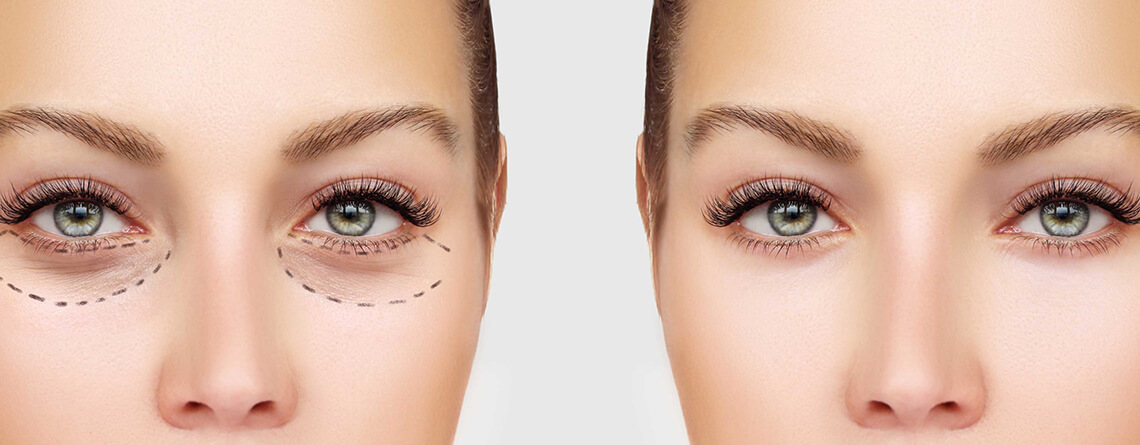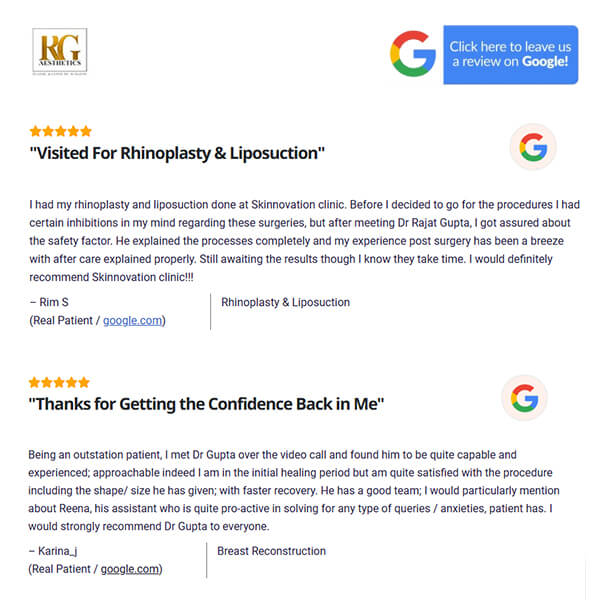
The eyes are the most expressive part of the face. Droopy eyelids give a face a haggard and tired appearance. It makes one look old and worn-out.
Skin around the eyes is thinnest on the body and therefore the first to show signs of ageing. Many experience fine lines in their late 20s, followed by puffy bags and dark circles under the eyes in 30s. This can be worsened with lack of sleep due to work stress or responsibility of a child. With time, there is further loss of elasticity noticed, which caused the hooding of the upper eyelids. In the 40s and beyond, extra skin folds accumulate on your eyelids and also underneath your eyes, making you appear more tired.
The situation further worsens when a heavy groove begins to form between the under eye and the cheek, which is more commonly known as a “Tear Trough”.
An aesthetic correction at this stage can give you a younger, fresher look and a healthier feel. If in addition there are signs of excessive exposure to the sun, malnutrition or lack of health, too much alcohol or tobacco, the use of drugs, hormonal imbalance, etc., the ageing effect becomes accentuated.
Blepharoplasty or Eyelid Rejuvenation is a procedure that helps to remove and tighten excess eyelid skin for a more alert and youthful appearance. Sometimes Blepharoplasty can also help to improve your vision by providing a less obstructed field of view, once droopy eyelids are improved.
The Procedure
As per your own request, you will be administered with local or general anesthesia before the surgery starts. You may require general anesthesia if the Blepharoplasty is more complicated or if you plan to undergo other cosmetic procedures at the same time.
Blepharoplasty can be performed on upper eyelids, lower eyelids, or both at the same time. Surgeon will make precise markings to designate where excess skin and fat pads need to be removed. Some underlying muscle may also be removed. On these markings, incisions are made in the natural folds of the eyelid, in the crease of the upper eyelid and just beneath the lashes or behind the lower eyelid. This way, incisions are virtually unnoticeable after they have healed. After making the incisions fat and muscle tissues are removed, surgical instruments such as scalpels, surgical scissors, radio-frequency cutting devices and sometimes cutting lasers. Once all the excess material is removed, sutures or tissue adhesives are applied carefully to smoothen the areas around the eyebrows and eyelids.

Have questions or want to get started? We are ready to help you with a smile!
What will the incision and scar be like?
The incision for the lower eyelid most of the time is made right along and under the eyelashes, where the eyeliner normally draws the eye line. Again, by means of the incision, excess skin, muscle and pockets of fat are resected. Many times when skin excision is not required, incision may be made through conjunctiva (inner layer of eyelid)
For upper eyelids rejuvenation, Dr. Gupta hides fine incisions in the crease above each eye, so that after surgery, the scar is almost imperceptible and camouflaged in the normal eye fold. And for the lower eyelid rejuvenation, Dr. Gupta places incisions inside the eyelid, so there are absolutely no visible scars. However, if their is loose skin under the eyes, Dr. Gupta uses an incision in the natural crease just near eyelashes so that after healing their is no evidence of surgery even without make-up.
All scars are either hidden inside the pink part of the eyelids or camouflaged along a skin crease.
Post Operation Care
The eyelids are sutured with very fine continuous sutures , which are removed after the 5th or 6th day.
The immediate, inevitable effect of this type of surgery are: bruising on both eyelids and swelling which sometimes closes the eyes and makes it difficult for them to open. As the swelling goes down, so normal palpebral function resumes. Improvement is achieved by applying compresses on both eyelids after surgery and for the first 48 hours. If a certain feeling of soreness appears, the solution is soothing eye drops, which relive the soreness immediately.
All these feelings of discomfort disappear within a week, approximately. Hypo allergic eye make-up can be used after the stitches have been removed.Contact lenses should not be used until after a few days have passed and only with a medical prescription.
The use of sunglasses is recommended if you go out in the street or in your car, in order to avoid direct sunlight on your eyelids during the first few weeks.
Dr. Rajat Gupta
MBBS, MS, DNB(Gen. Surg.),
DNB (Plastic Surgery)
Dr. Rajat Gupta is a board certified plastic surgeon in India with 10 years of experience to back his expertise in the domain of aesthetic surgeries.
Having completed his training from Maulana Azad Medical College and equipped with a thorough understanding of aesthetic needs of people, Dr. Gupta strives to offer the best remedies and cosmetic procedures outfitted with the latest technology to the aspirants in India and across the globe. To book an appointment, call: +91-9251711711 or email: contact@drrajatgupta.com


